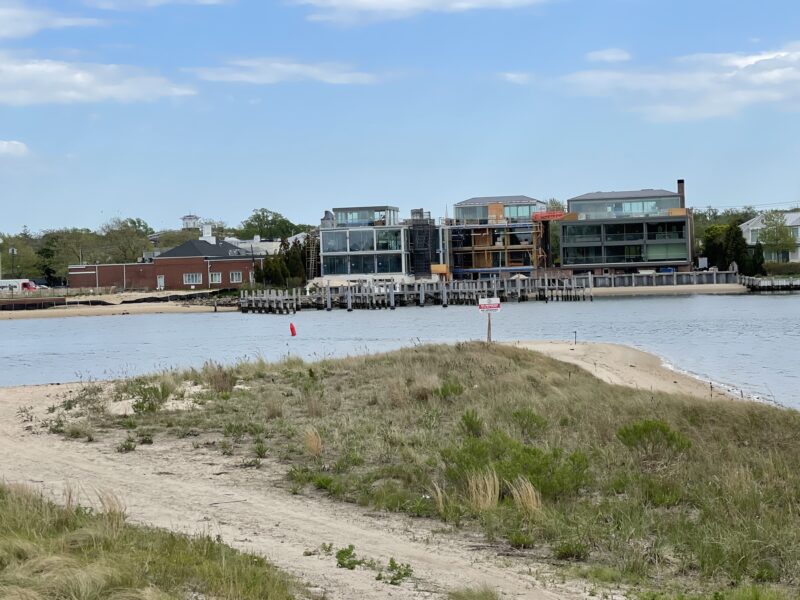

Form-based codes, a methodology for reinventing and preserving older communities as well as inventing new ones, are a mystery to most individuals. Sometimes referred to as pattern books, the concept has been around since the early 1980s. In many municipalities across the country, Smart Growth and New Urbanism movements have developed form-based codes to create a format to legally adopt creative land use principles applied to both new and existing communities.
According to the Form-Based Codes Institute: “A form-based code is a land development regulation that fosters predictable built results and a high-quality public realm by using physical form (rather than separation of uses) as the organizing principle for the code. A form-based code is a regulation, not a mere guideline, adopted into city, town, or county law. A form-based code offers a powerful alternative to conventional zoning regulation.”
There are, however, many different types of form-based codes that, for example, address the creation of new towns and provide overlay standards for existing historic districts as well as urban revitalization standards needed to regenerate weary main streets. Even an ordinary neighborhood whose character needs protection can benefit from a strong form-based code.
Form-based codes involve collaborative efforts on the part of the stakeholders, elected officials, consultants, and specialists in areas such as housing, planning and historic preservation, as well as developers and community organizers. To engage the community, a town will use staff and resources to hold a charette with citizens and a team of consultants to flesh out the needs, desires and problems requiring remediation to establish a vision and blueprint for the future.
When the push for larger houses manifested itself about 15 years ago in neighborhoods like Arverne and Douglaston, Queens, the existing zoning allowed room for the expansion of houses. The existing houses hadn’t come close to the allowable zoning limits in terms of front-yard setbacks and roofline heights. Houses, which had created a lovely rhythm with the streetscape, were being expanded or torn down and replaced with overbearing edifices having nothing to do with community character. To solve this problem, the community hired a consultant to help them establish a form-based code to rectify the situation. The new code established fixed parameters for heights and setbacks based on a range of existing setbacks from closest to the street to the furthest away. The same principle applied to roof heights as well. This is a simple example of how a form-based code has successfully prevented further incompatible construction in a neighborhood.
At the present time, Sag Harbor continues to suffer from the forces of greed and development, and this is reflected in new builds of overscaled houses in the village. Glover Street, once filled with a beautifully modulated row of small-scale houses, has lost both its charm and character with additions that are not subordinate to the original structures. This goes against the U.S. Secretary of the Interior’s Standards for the Treatment of Historic Properties, a standard that’s supposed to be adhered to by all National Register historic districts. Architectural review boards have oversight over this, but the Sag Harbor ARB seems to have dropped the ball altogether. In some instances, the original house actually winds up looking like it’s the addition to what is the new addition.
From 2014 until now, the number of new oversized houses has grown, particularly at the far end of Glover Street closest to the water. To add insult to injury, these new houses sit in a flood zone that necessitates building the first-floor level above the FEMA-mandated base floodplain elevation. The houses, raised up to comply with these regulations, loom even larger over the street since fill must be brought in to create a berm up to the foundation walls. This man-made knoll at the back end of the street is entirely out of whack with the remaining small houses near Main Street. In short, Glover Street has become the poster child for what’s going awry on residential streets in the village.
Downtown Sag Harbor, however, has become even more problematic. The notion of putting a new Bay Street Theater on the site of the former 7-Eleven building appears quite challenging. This site, situated at the confluence of five arteries (Bay Street, West Water Street, Route 114, Long Wharf and Main Street) has been a nightmarish intersection for years. While it would be nice to have the theater in the village, the practical difficulties created by even more density may prove to be unsustainable. The edges of the village out from Route 114 or the Bridgehampton-Sag Harbor Turnpike may well afford a better solution on more land with parking in a setting with campus-like amenities and perhaps even a shuttle trolley as well to the village.
All of this has been going on as the village has tried to implement a form-based code to address the problems of density, protection of the historic character and integrity of the village, and affordable housing. The newly approved waterfront overlay district will allow public access to the water and visual access through open viewsheds at grade from streets. Any new projects on the waterfront larger than 3,500 square feet will now require a special permit from the Board of Trustees. This clearly is a response to the leviathan known as the Bialsky condominiums built on the waterfront to the complete dismay of village residents. While stakeholders have worked with village officials toward a form-based code to achieve a shared vision based on community consensus, these efforts may be for naught as Mayor Jim Larocca recently decided to implement change by modifying the zoning ordinance.
As for the proposed Riverhead form-based code, approval has been delayed because of objections by the business committee to some of the proposed amendments to the code. There has been strong participation from the community regarding the issues of size, scale, and character. Local residents in Riverhead asked the Town Board to approve the Downtown Pattern Book with amendments including a height limitation of four stories (down from five) with a maximum height of 50 feet. Also at issue is a mandate for a net-zero energy standard with green roofs for new construction. One of the arguments against this provision involves the added cost to a project, which business owners feel would put them at a financial disadvantage compared to those who would build outside of the downtown area without these requirements. A consensus on requirements for setbacks, percentage of lot coverage and reduction of the floor-area ratio (a factor used to determine the allowable area of a property subject to development) has yet to be achieved. Voting on the proposed code revisions has been delayed with discussion to continue at a future work session.
Last year, the Hampton Bays Downtown Overlay District was annulled for its lack of compliance with SEQRA, the State Environmental Quality Review Act. Gayle Lombardi, who brought an Article 78 proceeding against the Town of Southampton, charged that its adoption was in violation of SEQRA. Several issues were cited including the use of incomplete data involving the public water supply as well as allowing for substandard off-street parking for the overlay district. The court concurred with Lombardi’s petition, and the form-based code became null and void.
What has become apparent with these form-based codes, despite the good intentions and participation of the public and the willingness of local governments to work with so many entities toward a greater good, is the realization that these codes are enormously complex and, very often, we’re really looking at a camel disguised as a horse.
Anne Surchin is an East End architect and co-author of “Houses of the Hamptons 1880-1930” with Gary Lawrance.
 More Posts from Anne Surchin
More Posts from Anne Surchin